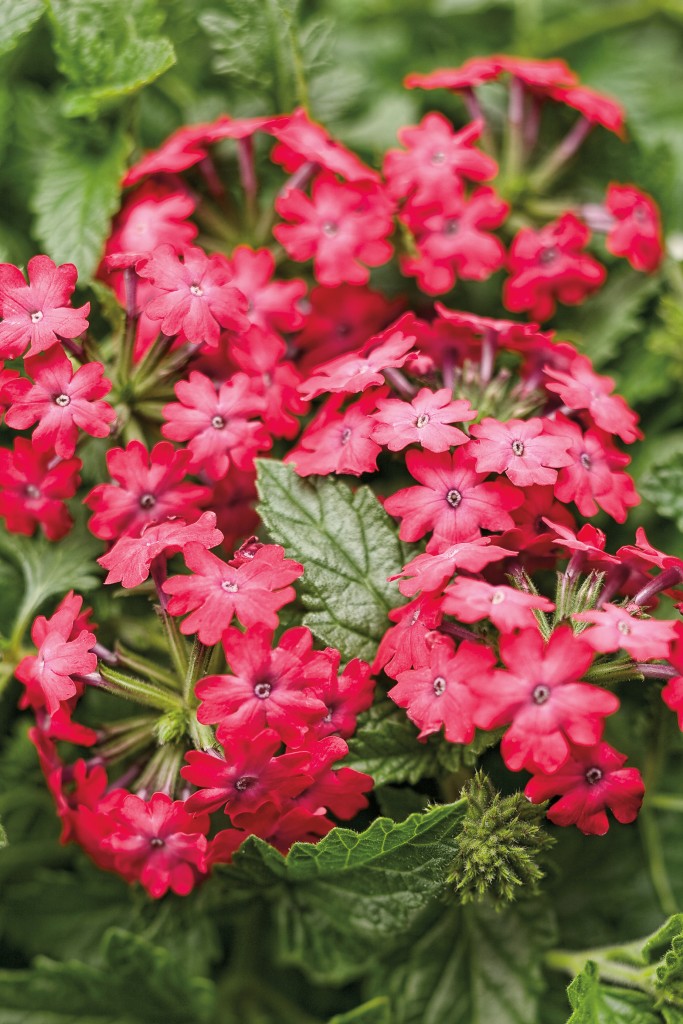
Crop Culture Report: Verbena Superbena Series
Ten years ago when Proven Winners released the Superbena collection of verbena it was a different world, and this crop is one that has changed a lot in terms of not only the quality of the breeding, but also the sheer number of varieties to choose from. In the past three years, we have been working to develop a collection of more compact Superbena to meet the demands of high-density growers without sacrificing the consumer performance. This led to the release of the Superbena Royale collection. It is the consumer performance that sets the standard in all of our selection processes, so in truth the Superbena and Superbena Royale are really more collections of the best performing, most disease-resistant verbena we have trialed. There are slight differences in their growth habits, but in every case they were selected to be superior to other genetics in performance and ease of production. Each release in the collection is the result of two years of screening for improved branching, a more compact habit, and no signs of powdery mildew. For every introduction in the collection, there are approximately 100 to 200 trial codes that fail to meet the mark. So with Superbena Royale expect a more compact, tighter habit than the original collection, but all the same great colors and performance growers have seen with the original collection.
Why choose a Superbena Royale versus an original Superbena? The main difference is in branching and habit, what you should choose depends a lot on what you are looking to produce:
The original Superbena collection (Burgundy, Coral Red, Dark Blue, Large Lilac Blue, Pink Parfait, Pink Shades and Purple) were selected to be very vigorous, grow into large plants and perform well in both mixed containers and the landscape. If you are still wanting to have that explosion of large flowered verbena in mixes or large monoculture containers, consider the original Superbena collection.
The Superbena Royale collection (Chambray, Iced Cherry, and Peachy Keen) were bred to work best in smaller container sizes such as 41/2-inch and gallon production. It doesn’t mean they won’t do well in larger containers, but with a more compact habit it may take a little longer to achieve the same effect as the original Superbena collection.
Superbena Royale Chambray combines a delicate fragrance with a trailing growth habit and silvery lavender blooms. New for 2012 both Royale Iced Cherry and Royale Peachy Keen bring some new colors to the verbena on the market. Iced Cherry is an intense cerise cherry pink with a small white eye, a prostrate growth habit and a multitude of small flower clusters. Peachy Keen represents the best in coral peach tones we have seen. With peach-toned verbena the color you get at retail is a result of the fading of the new florets to their mature color, the deeper the color you start with the better the overall effect.
Superbena Peachy Keen begins a deep orange and fades to peach, unlike many other peach genetics looked at over the last six to seven years.
Cultural/Growing Information
Before you plant: It is always a good idea to do a thorough greenhouse cleanup before your new plugs arrive for the upcoming season. Clean out old leaves and trash, scrub down benches and apply a general disinfectant to all growing surfaces. Use sterile growing medium and start with a clean, disinfected greenhouse.
When you plant: Drench with a broad-spectrum fungicide once the roots have reached the edge of the container. This helps to make sure that your crop is not affected during the key weeks after initial transplant.
pH: B (5.8 to 6.2) EC (2:1 Extraction Method): B (0.6 to 0.9)
Fertilization recommendations: A balanced liquid feed of 150- to 200-ppm nitrogen is recommended. Avoid high ammonium nitrogen types of fertilizer (percentage of ammonia/urea based nitrogen should not exceed 25 to 30 percent). Low pH and severe dry down can cause iron toxicity if supplemental iron has been applied.
Production temperatures: 65° F night and 72° F day. Plants can be held at cooler temperatures, to help control growth when they have reached near salable size.
Light levels: High light is essential to good branching and flowering in verbena.
Water Requirements: Moderate to moist; key with irrigation is to avoid extremes. Cycle the irrigation so that the plants are watered evenly and then allowed to dry slightly. One way of doing this is to irrigate when the media is still dark in color, but does not have moisture readily available by feeling it in your hand. This is the point when the plants should be irrigated again. Do not overwater and do not allow to wilt severely or plant quality will be drastically reduced.


 Video Library
Video Library 




















